Results 6,801 to 6,810 of 12094
Thread: Anandtech News
-
03-18-17, 10:02 AM #6801
Anandtech: Tag Heuer Connected Modular 45: Atom Z3400, Android Wear 2.0, Starts at $1
Tag Heuer last week announced its new generation smartwatch, co-developed with Google and Intel. The new Connected Modular 45 timepiece uses an Intel SoC, runs Google’s Android Wear 2.0, and is listed with 'expanded functionality'. Tag Heuer will also offer a variety of customization options for the new smartwatch and aim to address different market segments with the new product. Furthermore, the watchmaker says that the Connected Modular 45 design could easily fit a mechanical module and be converted into a regular timepiece.
Tag Heuer, Google and Intel formally introduced their first-gen connected smartwatch in late-2015. The wristwatch was the first device of the kind for Tag Heuer and for Intel, and so it was largely a test vehicle for both of them. As it turned out, the Tag Heuer Connected was considered a success by its developers and with the second generation they decided to install a more capable computing platform, a better display and introduce customizable design options. The use of Google Android Wear 2.0 should expand the overall functionality of the new smartwatch, in order to offer more features.
Tag Heuer will offer different configurations of the Connected Modular 45: 11 standard versions available in retail and additional configurations upon request. Each timepiece consists of three key elements which users can mix and match: the watch module, the lugs, and the strap. All watch modules are made of grade 5 titanium 5 with a sand-blasted satin finish (of a chosen color), but users can choose bezels of different colors made of ceramic, gold, aluminum, titanium, and even covered with diamonds. The lugs can match the bezels and thus can be made of aluminum, titanium, ceramic and so on. Finally, the manufacturer will offer a variety of straps featuring different colors (black, brown, red, green, etc.) made of calfskin, rubber, ceramic or titanium.
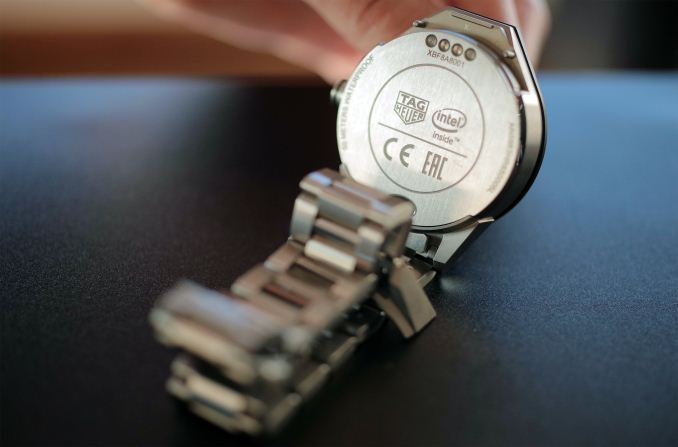
The central piece of the Connected Modular 45 is, of course, the watch module. The latter is based on the Intel Atom Z3400-series SoC (Merrifield, two Silvermont cores, 1 MB cache) equipped with 512 MB of LPDDR3 memory (down from 1 GB in the previous-gen model) and 4 GB of NAND flash memory. The device comes with a wireless module featuring Wi-Fi 802.11b/g/n, Bluetooth 4.1, GPS and NFC as well as a host of sensors, including an accelerometer, a gyroscope, a tilt detection sensor and an ambient light sensor. In addition, the module has a water-resistant microphone and a vibration/haptics engine, but no speaker. The most notable upgrade of the new Tag Heuer smartwatch is the new 1.39” AMOLED display, with a 400×400 resolution and 287 PPI, which is higher than many competing wearable devices. The display is covered with a 2.5-mm sapphire glass, just like many Swiss-made watches. As for the battery, the manufacturer states that it has a capacity of 410 mAh and claims it can last for up to 25 hours.
All the Connected Modular 45 watch modules are 50 meters water resistant, just like mechanical watches by Tag Heuer. Now, speaking of mechanics, when someone buys the Connected Modular 45, they can easily switch the smartwatch module with a mechanical watch module that Tag Heuer offers: a moderately-priced Swiss mechanical movement module with 3 hands (calibre 5) or an expensive COSC-certified chronograph Tourbillon Heuer 02-T. Both are also water resistant.Tag Heuer Connected Modular 45 Processor Intel Atom Z3400-series
2×Silvermont
PowerVR G6400 GPURAM 512 MB LPDDR3 Storage 4GB eMMC NAND flash Display 1.39" AMOLED
400×400 resolution
287 PPI pixel density
2-point touchDisplay Protection 2.5-mm Sapphire Glass Wireless Bluetooth 4.1
Wi-Fi
NFC
GPSSensors accelerometer
gyroscope
tilt detection sensor
ambient light sensorBattery 410 mAh
Battery life: 25 hoursCharging Magnetic charging cable Water Resistance 50 meters/50 atmosphere Color Black, titanium, aluminum, gold, diamond, etc. Strap Rubber, leather, ceramic, titanium Dimensions Diameter: ? 45 mm
Height: 13.75 mmInputs One button, touchscreen Operating System Google Android Wear 2.0 with phone application by Tag Heuer Compatibility Google Android 4.3+
Apple iOS 9+Price Starts at €1600/$1650
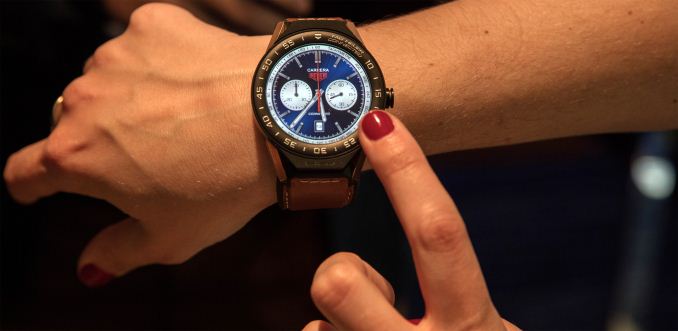
One of the things that Tag Heuer has learnt since the launch of the original Connected smartwatch is that there is a market for premium smartwatches. As a result, the Connected Modular 45 will be available at different price points depending on their external finish. The starting price of the smartwatch is $1650/€1600/£1400, but when fully beefed up with diamonds, their price increases to around $7000. Additionally, Tag Heuer offers the so-called Deluxe Box Set that includes one Connected Modular 45 (in grade 5 titanium, with titanium lugs and brown natural leather strap) and one chronograph Heuer-02T tourbillon mechanical module for a total price of €16,650/$17,000 (ex. tax). Both electronics and mechanical modules come with a two-year warranty.
Sources: Tag Heuer, Google, Intel.
Related Reading:
- Apple Announces Apple Watch Series 2
- ASUS ZenWatch 3 Announced: Round Display, Snapdragon Wear 2100, Long Battery Life
- Samsung’s Gear S2 Classic 3G and 4G Smartwatches with eSIM to Hit the Market in March
- Google Adds New Hands-Free Features to Android Wear
More...
-
03-18-17, 02:31 PM #6802
Anandtech: Bosch and NVIDIA Team Up for Xavier-Based Self-Driving Systems for Mass Ma
Bosch and NVIDIA on Thursday announced plans to co-develop self-driving systems for mass-market vehicles. The solutions will use NVIDIA’s next-generation codenamed Xavier SoC as well as the company’s AI-related IP. Meanwhile, Bosch will offer its expertise in car electronics as well as auto navigation.
Typically, automakers mention self-driving cars in the context of premium and commercial vehicles, but it is pretty obvious that, given the opportunity, self-driving is a technology that will be a part of the vast majority of cars available in the next decade and onwards. Bosch and NVIDIA are working on an autopilot platform for mass-market vehicles that will not cost as much as people think, and will be able to be widespread. To build the systems, the two companies will use NVIDIA’s upcoming Drive PX platform based on the Xavier system-on-chip, which is a next-gen Tegra processor set to be mass-produced sometimes in 2018 or 2019.
Bosch and NVIDIA did not disclose too many details about their upcoming self-driving systems, but indicated that they are talking about the Level 4 autonomous capabilities in which a car can drive on its own without any human intervention. To enable Level 4 autonomous capabilities, NVIDIA will offer its Xavier SoC featuring eight general-purpose in-house-designed custom ARMv8-A cores, a GPU based on the Volta architecture with 512 stream processors, hardware-based encoders/decoders for video streams with up to 7680×4320 resolution, and various I/O capabilities.
From performance point of view, Xavier is now expected to hit 30 Deep Learning Tera-Ops (DL TOPS) (a metric for measuring 8-bit integer operations), which is 50% higher when compared to NVIDIA’s Drive PX 2, the platform currently used by various automakers to build their autopilot systems (e.g., Tesla Motors uses the Drive PX 2 for various vehicles). NVIDIA's goal is to deliver this at 30 W, for an efficiency ratio of 1 DL TOPS-per-watt. This is a rather low level of power consumption given the fact that the chip is expected to be produced using TSMC’s 16 nm FinFET+ process technology, the same that is used to make the Tegra (Parker) SoC of the Drive PX 2.
The developers say that the next-gen Xavier-based Drive PX will be able to fuse data from multiple sensors (cameras, lidar, radar, ultrasonic, etc.) and its compute performance will be enough to run deep neural nets to sense surroundings, understand the environment, predict the behavior and position of other objects as well as ensure safety of the driver in real-time. Given the fact that the upcoming Drive PX will be more powerful than the Drive PX 2, it is clear that it will be able to better satisfy demands of automakers. In fact, since we are talking about a completely autonomous self-driving system, the more compute efficiency NVIDIA can get from its Xavier the better.
Speaking of the SoC, it is highly likely that the combination of its performance, power and the level of integration is what attracted Bosch to the platform. One chip with a moderate power consumption means that Bosch engineers will be able to design relatively compact and reasonable-priced systems for self-driving and then help automakers to integrate them into their vehicles.
Unfortunately, we do not know what car brands will use the autopilot systems co-developed by Bosch and NVIDIA. Bosch supplies auto electronics to many carmakers, including PSA, which owns Peugeot, Citroën and Opel brands.
Neither Bosch nor NVIDIA made any indications about when they expect actual cars featuring their autopilot systems to hit the roads. But since NVIDIA plans to start sampling of its Xavier in late 2017 and then mass produce it in 2018 or 2019, it is logical to expect the first commercial applications based on the SoC to become available sometime in the 2020s, after the (extensive) validation and certification period for an automotive system.
Related Reading:
- NVIDIA Teases Xavier, a High-Performance ARM SoC for Drive PX & AI
- Intel to Acquire Mobileye for $15 Billion
- NVIDIA Announces DRIVE PX 2 - Pascal Power For Self-Driving Cars
More...
-
03-19-17, 11:37 AM #6803
Anandtech: Intel Introduces Optane SSD DC P4800X With 3D XPoint Memory
A year and a half after first publicly unveiling their new 3D XPoint non-volatile memory technology, Intel is launching the first product incorporating the new memory. The Intel Optane SSD DC P4800X is an enterprise PCIe 3 x4 NVMe SSD that Intel promises will be the the most responsive data center SSD with lower latency than all of the fastest NAND flash based competitors. After months of touting 3D XPoint memory primarily with rough order of magnitude claims about its performance, endurance and cost relative to DRAM and NAND flash, and after some unexplained delays, Intel is finally providing some concrete specifications and pricing for a complete SSD that is shipping today. The information is more limited than we're accustomed to for their NAND flash SSDs, and Intel still isn't confirming anything about the materials or exact operating principle of the 3D XPoint memory cell.
Current computer system architectures are based around the use of DRAM as working memory and NAND flash for fast storage. 3D XPoint memory falls between the two technologies on most important metrics, so Optane SSDs bring a new dimension of complication to a server architect's task. For most enterprise use cases, the most enticing feature of Optane SSDs over NAND SSDs is the former's higher performance, especially reduced latencies. Aside from the gains from switching to the NVMe protocol, the latency offered by NAND flash based SSDs has been mostly stagnant or even regressed with the disappearance of SLC NAND from the market, even as throughput and capacity have grown with every generation.
The Intel Optane SSD DC P4800X is rated for a typical read or write latency under 10µs, compared to tens of microseconds for the best NAND flash based SSDs, and about 4µs minimum imposed by PCIe and NVMe transaction overhead. More impressive is how little latency degrades under less than ideal conditions. Queue depth 1 random reads are rated to remain below 30µs even while the drive is simultaneously accepting 2GB/s of sustained random writes (about 500k IOPS). Intel even specifies Quality of Service (QoS) standards for latency at the 99.999th percentile, with even QD16 random writes staying almost entirely below 200µs. A consequence of the low latency is that the P4800X can deliver full throughput at lower queue depths: the P4800X is rated to deliver maximum IOPS at QD16 while flash-based SSDs are specified for queue depths of at least 32. Unlike flash memory, the read and write performance of 3D XPoint memory is roughly equal, and this is reflected in Intel's specifications for the P4800X.
Conspicuously missing from the performance specifications are sequential throughput. The P4800X can already use more than half of the available PCIe bandwidth with a completely random I/O workload. Rather than reassure us that the P4800X can do even better with larger transfer sizes, Intel suggests that being overly concerned with the sequential transfer speeds is a sign that you should be shopping for their 3D NAND SSDs instead. They'll offer plenty of throughput for a far lower price.
Intel's 3D XPoint memory is being manufactured as a 128Gb (16GB) die, slightly behind the trend for NAND flash capacities. As a result, the Optane SSD DC P4800X will start with a 375GB model and later this year be followed by 750GB and 1.5TB models. The top-performing enterprise SSDs currently tend to be multi-TB drives. Intel has shared very few details about the new controller they've developed for the P4800X, but they have disclosed that the 375GB model uses seven channels with four dies per channel, for a total of 28 chips and a raw capacity of 448GB. Fourteen packages of 3D XPoint memory are visible on the back side of the drive in the photographs Intel has released, suggesting that fourteen more packages are hiding under the heatsink and that the 375GB add-in card model is using single-die packages. The controller implements a high-performance all-hardware read path that does not involve the drive's firmware, and while the exact stride of memory accesses is not known, a single 4k read will be spread across all seven channels.
3D XPoint memory can be read or written with byte granularity and modifications can be written in place, so it is free from the worst internal fragmentation and write amplification challenges that are caused by the large page sizes and huge erase block sizes of NAND flash. This means that further overprovisioning beyond the drive's native amount will have minimal impact on performance and that the performance of a full drive should not suffer severely the way flash based SSDs do. However, some amount of spare area is still required for error correction and other metadata and for a pool of spare blocks. The write endurance of 3D XPoint memory is not infinite so wear leveling is still required, but it is a much simpler process that requires much less spare area.
The Intel Optane SSD DC P4800X has a write endurance rating of 30 Drive Writes Per Day, and Intel is hopeful that future products can offer even higher ratings once 3D XPoint memory has more broadly proven its reliability. Today's limited release 375GB models have a three year warranty for a total write endurance rating of 12.3 PB, and once the product line is expanded to broad availability of the full range of capacities in the second half of this year the warranty period will be five years.
Intel is offering the 375GB P4800X in PCIe add-in card form factor with a MSRP of $1520 starting today with a limited early-ship program. In Q2 a 375GB U.2 model will ship, as well as a 750GB add-in card. In the second half of the year the rest of the capacity and form factor options will be available, but prices and exact release dates for those models have not been announced. At just over $4/GB the P4800X seems to fall much closer to DRAM than NAND in price, though to be fair the enterprise SSDs it will compete against are all well over $1/GB and the largest DDR4 DIMMs are around $10/GB.
[TABLE="width: 600, align: center"]
[TR="class: tgrey"]
[TD="colspan: 5, align: center"]Intel Optane SSD DC P4800X Specifications[/TD]
[/TR]
[TR="class: tlblue"]
[TD="colspan: 2"]Capacity[/TD]
[TD="colspan: 1"]375 GB[/TD]
[TD]750 GB[/TD]
[TD]1.5 TB[/TD]
[/TR]
[TR]
[TD="class: tlgrey, colspan: 2"]Form Factor[/TD]
[TD="colspan: 3, align: center"]PCIe HHHL or 2.5" 15mm U.2[/TD]
[/TR]
[TR]
[TD="class: tlgrey, colspan: 2"]Interface[/TD]
[TD="colspan: 3, align: center"]PCIe 3.0 x4 NVMe[/TD]
[/TR]
[TR]
[TD="class: tlgrey, colspan: 2"]Controller[/TD]
[TD="colspan: 3, align: center"]Intel unnamed[/TD]
[/TR]
[TR]
[TD="class: tlgrey, colspan: 2"]Memory[/TD]
[TD="colspan: 3, align: center"]128Gb 20nm Intel 3D XPoint[/TD]
[/TR]
[TR]
[TD="class: tlgrey, colspan: 2"]Typical Latency (R/W)[/TD]
[TD="colspan: 3, align: center"]
-
03-20-17, 03:12 AM #6804
Anandtech: Qualcomm Announces 205 Mobile Platform: Entry-Level LTE for India & Emergi
This morning in New Delhi, Qualcomm is taking the wraps off of their latest entry-level, high-volume SoC, the Qualcomm 205 SoC. The cornerstone of the Qualcomm 205 Mobile Platform – and keeping in mind last week’s renaming of Qualcomm’s product stack – the 205 Platform is being launched as Qualcomm’s new entry-level SoC for emerging markets. Qualcomm’s focus on this latest 200-series SoC is bringing an LTE-enabled SoC down to its lowest price point yet, ultimately aiming to get LTE into the sub-$50 mass-market feature phones that are popular in these markets.
From a technical perspective, Qualcomm has offered LTE in the 200 series SoCs since the 210 SoC in 2014. However this was on a slightly more premium quad-core CPU design, whereas Qualcomm’s cheapest SoCs are even simpler dual-core designs. The difference comes down a fraction of a dollar, but for emerging markets looking to push out to LTE – and with many of those markets subsidizing phones – even the cents matter. So now Qualcomm is rolling out a dual-core design with LTE, offering an even more basic design than the 3G-only 208 or the LTE-equipped 210.Qualcomm's 200-Series SoC Lineup 205 SoC 208 SoC 210 SoC CPU 2 x ARM Cortex A7 @ 1.1GHz 2 x ARM Cortex A7 @ 1.1GHz 4 x ARM Cortex A7 @ 1.1GHz GPU Adreno 304 Adreno 304 Adreno 304 Memory Interface 32-bit LPDDR2/3 32-bit LPDDR2/3 32-bit LPDDR2/3 Integrated Modem Snapdragon X5: LTE Category 4, HSPA+, DS-DA, VoLTE Gobi 3G: HSPA+, DS-DA Snapdragon X5: LTE Category 4, HSPA+, DS-DA, VoLTE Integrated WiFi 802.11n 1-stream 802.11n 1-stream 802.11n 1-stream Manufacturing Process 28nm LP 28nm LP 28nm LP Video Encode/Decode Decode: 720p30
Encode: 480p30Decode: 720p
Encode: 720pDecode: 1080p
Encode: 720pLaunch Date 03/2017 09/2014 09/2014
At a high level, the specs are unremarkable and appropriately simplistic. We’re looking at a dual-core Cortex-A7 CPU running at 1.1GHz and paired up with an Adreno 304 GPU, and, most importantly, one of the company’s X5 LTE modems. The X5 is a basic modem design that offers up to LTE Cat 4 speeds (150Mbps down/50Mbps up), which is more than sufficient for Qualcomm’s goals with LTE for emerging markets. Dual-sim functionality is present, as is VoLTE and VoWiFi as well. Video encode/decode are very basic, offering 720p30 decode and 480p30 encode, with a display controller capable of driving just a VGA (640x480) display, all of which is a notable reduction from the 208/210. The Hexagon DSP has been removed as well, saving further die space. Even the chip itself is designed to save a few pennies on implementation; it’s pin-compatible with the 210/208 so that it can be dropped into existing designs.
Qualcomm’s big push for LTE connectivity in entry-level phones in India and other emerging markets comes as the company expects both consumers and carriers in those markets to make the transition over to LTE, which in turn means phone manufacturers are in need of a cheap platform that can handle LTE. Though the definition of what exactly a feature phone is in 2017 is a bit muddled – the form factor seems to be the only defining element when even the OSes are now full-fledged systems based on ASOP and other Linux projects – they remain the cheapest phones, and Qualcomm expects them to benefit from LTE in similar ways as smartphones have over the last several years.
Underpinning all of this is of course the massive spectrum efficiency gains in LTE versus 3G & 2G communication protocols, which increase the bandwidth available in a given area even without a larger number of towers. Otherwise Qualcomm expects the use cases for feature phones to be many of the same ones as smartphone users already do, if only on a smaller scale: social media, video streaming, etc. Meanwhile, one claim that particularly caught my attention is that Qualcomm is expecting to be able to get 45 day standby out of 205 phones; while 205 is of course designed for low power operation, with a 2000mAh battery this works out to a standby power consumption of just 6mW.
Finally, Qualcomm is noting that the 205 SoC and its associated software were all developed in India, as part of fulfilling the country’s Make in India initiative, which at a couple of years old now, is intended to encourage manufacturers to invest in manufacturing within the country rather than importing finished products. While Make in India and the country’s associated attempts to encourage internal manufacturing have not always been well received – Apple and others have balked at the concept at times – it has been successful in driving semiconductor companies like Qualcomm towards developing entry-level hardware in the country. Though in Qualcomm’s case, the company has operated a development center for a lot longer than just the last couple of years.
Wrapping things up, Qualcomm is shipping the 205 Mobile Platform today. Phones based on the platform will be showing up quickly thereafter, with the first devices expected next quarter.
More...
-
03-20-17, 09:14 AM #6805
Anandtech: The Tesoro Excalibur SE Spectrum Review: A Mechanical Keyboard with Gatero
The popularity of mechanical keyboards and the saturation of the market with a myriad of products has led manufacturers into seeking development of new features and technologies. In this review, we are having a look at Tesoro’s newest product that makes use of their newly developed optical key switches, the Excalibur SE Spectrum.
More...
-
03-21-17, 12:13 AM #6806
Anandtech: ARM Launches DynamIQ: big.Little to Eight Cores Per Cluster
Most users delving into SoCs know about ARM core designs over the years. Initially we had single CPUs, then paired CPUs and then quad-core processors, using early ARM cores to help drive performance. In October 2011, ARM introduced big.Little – the ability to use two different ARM cores in the same design by typically pairing a two or four core high-performance cluster with a two or four core high-efficiency cluster design. From this we have offshoots, like Mediatek’s tri-cluster design, or just wide core mesh designs such as Cavium’s ThunderX. As the tide of progress washes against the sure, ARM is today announcing the next step on the sandy beach with DynamIQ.
The underlying theme with DynamIQ is heterogeneous scalability. Those two words hide a lot of ecosystem jargon, but as ARM predicts that another 100 billion ARM chips will be sold in the next five years, they pin key areas such as automotive, artificial intelligence and machine learning at the interesting end of that growth. As a result, performance, efficiency, scalability, and latency are all going to be key metrics moving forward that DynamIQ aims to facilitate.
The first stage of DynamIQ is a larger cluster paradigm - which means up to eight cores per cluster. But in a twist, there can be a variable core design within a cluster. Those eight cores could be different cores entirely, from different ARM Cortex-A families in different configurations.
Many questions come up here, such as how the cache hierarchy will allow threads to migrate between cores within a cluster (perhaps similar to how threads migrate between clusters on big.Little today), even when cores have different cache arrangements. ARM did not yet go into that level of detail, however we were told that more information will be provided in the coming months.
Each variable core-configuration cluster will be a part of a new fabric, with uses additional power saving modes and aims to provide much lower latency. The underlying design also allows each core to be controlled independently for voltage and frequency, as well as sleep states. Based on the slide diagrams, various other IP blocks, such as accelerators, should be able to be plugged into this fabric and benefit from that low latency. ARM quoted elements such as safety critical automotive decisions can benefit from this.
One of the focus areas from ARM’s presentation was one of redundancy. The new fabric will allow a seemingly unlimited number of clusters to be used, such that if one cluster fails the others might take its place (or if an accelerator fails). That being said, the sort of redundancy that some of the customers of ARM chips might require is fail-over in the event of physical damage, such as automotive car control is retained if there are >2 ‘brains’ in the vehicle and there is an impact which disables one. It will be interesting to see if ARM’s vision for DynamIQ extends to that level of redundancy at the SoC level, or if it will be up to ARM’s partners to develop on the top of DynamIQ.
Along with the new fabric, ARM stated that a new memory sub-system design is in place to assist with the compute capabilities, however nothing specific was mentioned. Along the lines of additional compute, ARM did state that new dedicated processor instructions (such as limited precision math) for artificial intelligence and machine learning will be integrated into a variant of the ARMv8 architecture. We’re unsure if this is an extension of ARMv8.2-A, which introduced half-precision for data processing, or a new version. ARMv8.2-A also adds in RAS features and memory model enhancements, which coincides with the ‘new memory sub-system design’ mentioned earlier. When asked about which cores can use DynamIQ, ARM stated that new cores would be required. Future cores will be ARMv8.2-A compliant and will be able to be part of DynamIQ.
ARM’s presentation focused mainly on DynamIQ for new and upcoming technologies, such as AI, automotive and mixed reality, although it was clear that DynamIQ can be used with other existing edge-case use models, such as tablets and smartphones. This will depend on how ARM supports current core designs in the market (such as updates to A53, A72 and A73) or whether DynamIQ requires separate ARM licenses. We fully expect any new cores announced from this point on will support the technology, in the same way that current ARM cores support big.Little.
So here’s some conjecture. A future tablet SoC uses DynamIQ, which consists of two high-powered cores, four mid-range cores, and two low-power cores, without a dual cluster / big.Little design. Either that or all three types of cores are on different clusters altogether using the new topology. Actually, the latter sounds more feasible from a silicon design standpoint, as well as software management. That being said, the spec sheet of any future design using DynamIQ will now have to list the cores in each cluster. ARM did state that it should be fairly easy to control which cores are processing which instruction streams in order to get either the best power or the best efficiency as needed.
ARM states that more information is to come over the next few months.
Gallery: ARM DynamIQ Slides





More...
-
03-21-17, 06:17 AM #6807
Anandtech: NVIDIA Releases 378.92 WHQL Driver: Mass Effect and Dolby Vision for Games
This week in a relatively brief driver update, NVIDIA has released their Game Ready driver for the newly released Mass Effect: Andromeda.
Following with the 378 branch, 378.92 adds official Game Ready support for the game. This includes the usual driver optimizations as well as an SLI profile for EA's soon-to-be blockbuster game. Alongside Mass Effect, we are also getting game ready support for Rock Band VR, and updated SLI profiles for Dead Rising 4 and Deus Ex: Breach.
However buried in this driver release is a second noteworthy and interesting feature addition: NVIDIA is also enabling Dolby Vision support for games. Dolby's competing HDR transport standard is arguably a higher fidelity standard than HDR10 thanks to aspects such as its 12bpc color modes, however its proprietary nature has limited its adoption versus HDR10. And while we're still early in the days of HDR PC monitors – the first HDR10 monitors don't even ship until later this month – Dolby Vision hasn't been on the PC monitor roadmap at all.
In any case, the addition of Dolby Vision appears to be aimed at use with TVs, where high-end models do offer Dolby Vision support. So for those users out there who own the necessary TV, an NVIDIA card, and Mass Effect: Andromeda (the sole Dolby Vision-enabled PC game), they should be in for a treat.
Anyone interested can download the updated drivers through GeForce Experience or on the NVIDIA driver download page. More information on this update and further issues can be found in the 378.92 release notes.
More...
-
03-21-17, 03:10 PM #6808
Anandtech: Apple Announces 2017 iPad 9.7-Inch: Entry Level iPad now at $329
With the spring finally upon us, Apple this morning is going about some spring cleaning of the iPad family. The iPad Air 2 and the iPad Mini 2 have been discontinued, making way for a new entry-level iPad: the simply named iPad 9.7-Inch. This latest iPad is a bit of an unusual twist on the usual Apple fare; it’s not really a successor to the iPad Air 2, and from a features perspective it’s essentially a kitbash of a few different Apple products. None the less, at $329 it’s also the lowest Apple has ever priced a 9.7” iPad, as retailer sales aside, Apple hasn’t offered this size below $399 before. As a result the new 9.7” iPad is likely to make an impact, even in the softening market for tablets.
From a high-level perspective, the iPad 9.7” (2017) is an interesting kitbash between the iPhone 6s, the iPad Air 2, and the iPad Air 1. It’s obvious that Apple was aiming to make a more budget-friendly iPad from the start, so you won’t find any new, cutting edge technology in here. Rather everything is essentially cobbled together from the aforementioned Apple products. This, consequently, is also why the 2017 iPad is not a true successor to the iPad Air 2, as it makes some necessary compromises to hit the $329 price tag.Apple 9.7-Inch iPad Family Apple iPad 9.7" (2017) Apple iPad Air 2
(Discontinued)Apple iPad Pro 9.7" SoC Apple A9
2 x Apple Twister @ 1.85GHz?Apple A8X
3 x Apple Typhoon @ 1.5GHzApple A9X
2 x Apple Twister @ ~2.2GHzGPU PowerVR GT7600 PowerVR 8 Cluster Series6XT PowerVR 12 Cluster Series7XT RAM 2GB LPDDR4? 2GB LPDDR3 2GB LPDDR4 NAND 32 / 128 GB 16 / 64 / 128 GB WiFi: 32 / 128 / 256 GB WiFi + Cellular:
32 / 128 / 256 GBDisplay 9.7" 2048x1536 IPS LCD Gamut sRGB DCI-P3 Size and Mass 240 x 169.5 x 7.5mm
469g WiFi, 478g LTE240 x 169.5 x 6.1mm
437g WiFi, 444g LTECamera 8MP Rear-facing
f/2.4, 1.1 micron12MP Rear-facing
f/2.2, 1.22 micron1.2MP Front-facing f/2.2 5MP Front-facing f/2.2 Battery 32.4 Wh 27.3 Wh 27.5 Wh Launch OS iOS 10 iOS 8 iOS 9 Cellular Category 4 LTE + GPS/GNSS in Cellular SKU Other Connectivity 2x2 802.11a/b/g/n/ac + BT 4.2, Apple Lightning, Headphone Jack 2x2 802.11a/b/g/n/ac + BT 4.2, Apple Lightning, Headphone Jack,
Smart Connector on iPad ProSIM Optional NanoSIM Launch Price 32GB: $329
128GB: $42916GB: $499 32 GB: $599
128 GB: $749
256 GB: $899
The shell itself is taken from the iPad Air 1, offering the same dimensions and weight as Apple’s 2013 flagship tablet. This means that at 7.5mm, the new iPad is actually thicker than the iPad Air 2 by 1.4mm (~23%), though as we’ll see, Apple appears to be putting some of the additional volume to good use. Apple also seems to have lifted the display assembly from the iPad Air 1; while all of the modern Retina 9.7” iPads have offered a 2048x1536 IPS display, this one in particular lacks the fully laminated display that was introduced in the iPad Air 2 and is part of the reason that the aforementioned tablet was made thinner.
Meanwhile inside the tablet itself, Apple has lifted the bulk of the guts from the iPhone 6s. At the heart of the new iPad is an Apple A9 SoC, which incorporates a pair of Apple’s “Cyclone” CPU cores and a 6 cluster PowerVR Series7XT GPU. Based on Apple’s performance estimates, it looks like this is clocked at or very near the 1.85GHz clockspeed of the iPhone 6s, so burst performance should be very close to the iPhone’s. Meanwhile Apple hasn’t confirmed the memory capacity, but since the A9 is a PoP design (and all other 9.7” iPads have 2GB of RAM), 2GB is almost certain for the new iPad as well.
Finally, from the iPad Air 2 comes the tablet’s camera modules. The rear camera is an 8 Megapixel f/2.4 camera that we’ve seen in the iPad Air 2 and a number of other Apple tablets, while the front camera is Apple’s similarly common 1.2MP f/2.2 camera. Apple doesn’t publish the exact sensor configuration, but I would be surprised if this wasn’t lifted wholesale from Apple’s existing camera module stockpile.
Getting back to size for a moment, the 2017 iPad 9.7” will also have the highest capacity battery of a 9.7” iPad in the last few years. Along with the iPad Air 1 shell, Apple has also brought back that tablet’s 32.4 Watt-hour battery, giving it a 19% battery capacity boost over the iPad Air 2. Coupled with the use of a smartphone SoC, and I’m very curious to see what real-world battery life is at. While Apple officially advertises the iPad as having the same 10 hour (Wi-Fi) battery life as the other iPads, there’s definitely some room to pick up another hour or two of runtime. Though ultimately it’s going to be the display that’s the deciding factor, as it’s already the biggest power consumer on an iPad.
Apple will be offering the 2017 iPad 9.7” in two capacities, 32GB and 128GB, with the latter capacity carrying a $100 premium. Somewhat surprisingly, the company is also offering a version of the tablet with a cellular modem despite the budget-focused nature of the tablet. Unfortunately Apple is still charging a $130 premium for this functionality, which feels especially steep given the tablet’s low base price.
Finally, Apple will begin taking pre-orders for the tablet this Friday the 24th. The tablet is set to ship to next week to both pre-order customers and retail stores.
Overall it will be interesting to see how Apple’s new entry-level iPad does in the market. The company’s tablet business continues to chug along, but sales as well off from their heyday as tablet replacement cycles are closer to laptops than phones. At the same time the iPad 2 was one of Apple’s most popular tablets due to its relatively low price for its size, so Apple may be looking to recapture some of that energy. Though it’s interesting to note that in this process, Apple has actually increased the price of an entry-level iPad some; whereas the discontinued iPad Mini 2 was $269, the new iPad bumps that up by $70.
Speaking of which, the new iPad does put the remaining iPad Mini 4 configurations in a bit of an odd spot. The tiniest tablet actually did get an update of its own: the $399 32GB model was discontinued, and the sole 128GB model has been dropped to $399 in its place. Despite the price shuffle though, it is an older design and remains the only iPad not using an A9-generation processor. While Apple’s spring cleaning makes it clear which tablet Apple wants to be their entry-level iPad, the Mini remains as the odd man out in this new lineup.
More...
-
03-22-17, 03:53 AM #6809
Anandtech: The Qualcomm Snapdragon 835 Performance Preview
Qualcomm's Snapdragon 835 gets a CPU transplant, an updated GPU, a 1Gbps LTE modem, and other updates. We were able to see the new SoC in action and collect some preliminary performance data during a brief testing session at Qualcomm's headquarters in San Diego. How does it compare to Snapdragon 820 and the Kirin 960?
More...
-
03-22-17, 03:53 AM #6810
Anandtech: Capsule Review: Logitech MK850 Performance Wireless Keyboard and Mouse Com
We have been reviewing Logitech's multi-device wireless input peripherals for a few years now. The Logitech K480 was launched in 2014, and the Logitech K780 and M720 keyboard and mouse were launched last year. The K780 and M720 Triathlon were separate products. The success of these input peripherals has prompted Logitech to introduce the MK850 Performance combo - a full-length multi-device wireless keyboard along with the wireless M720 Triathlon mouse. The combo is made more powerful by the DuoLink feature - using the keyboard to alter the functionality of the mouse buttons and gestures.
The Logitech MK850 Performance combo comes with a single Unifying USB receiver. Logitech also bundles a USB extender for use-cases where the placement of the spare USB port in the PC might result in spotty wireless performance. The combo can be paired with up to three different host devices and easily switch between them. The hosts can be Android, iOS, Mac or Windows devices, and the keys in the keyboard get automatically re-mapped depending on the host OS. Both the mouse and the keyboard have explicit on/off buttons in order to conserve battery life. The keyboard needs 2xAAA batteries, while the mouse needs a single AA battery. Logitech claims battery life of two years for the mouse and three years for the keyboard.
We had talked about how the K780 keyboard addressed the shortcomings of the K480 keyboard. The keyboard component of the MK850 adds a number of interesting features.
- Ergonomic contour with a raised profile in the middle, suitable for extended duration usage
- Full-sized keyboard (101 keys) with explicit number pad and full-sized arrow keys.
- Cushioned palm rest along the lower side of the keyboard for comfortable extended duration usage
- Availability of multiple tilt angles for the keyboard (0, 4, or 8 degrees)
- Better typing experience compared to the K480 and K780
- Ability to use the Fn key to enhance the combo mouse functionality
Users of the K480 and K780 have appreciated the ability to use the cradle to keep their smartphones in an accessible location while using their computers. The MK850's keyboard, however, doesn't have a cradle for mobile devices.
Hardware-wise, the mouse component of the MK850 is the M720 Triathlon (the sticker on the back of the mouse even has the M720 Triathlon label). The mouse is also the component in the package with a compartment to store the Unifying receiver. As part of the MK850 combo, the differences boil down to the DuoLink feature controlled by the Logitech Options software.
The Logitech Options Software
The Unifying receiver bundled with the package is obviously configured to keep both devices active simultaneously. Installing the Logitech Options software presents both devices along with the battery levels and connection method (Unifying receiver or Bluetooth) at a single glance.
The options available for the mouse (standalone) are an exact replica of what we saw in the M720 Triathlon review. Out of the 8 buttons in the mouse, two (the one behind the scrollwheel that controls the rate at which it moves, and the one that switches the host device to which the mouse is paired) can't be remapped. Everything else can be configured using the Options software.
The left and right buttons can be swapped. The pointer speed can be finely adjusted and the scrollwheel direction can also be swapped. The mouse also has a gesture button below the three raised buttons on the left side. The scrollwheel can be swayed right or left for horizontal scrolling (on mobile devices, that acts similar to swiping right or left on the touchscreen). Along with the device change button, we also have the Forward and Back buttons on the left. The scrollwheel can itself act as a middle mouse button. All of these can be mapped to one of a variety of Windows actions.
Activating the Options software when the K850 Performance keyboard as well as the M720 Triathlon mouse are connected provides users with the ability to configure the DuoLink features. The option panels associated with the mouse have a 'Default' and a 'Fn' mode, with the latter configuration intended for activation by pressing the Fn key on the keyboard along with the relevant mouse event.
The K850 Performance's options include the ability to keep the keyboard always in the Windows layout and the option to use the F1-F12 keys as standard function keys (without using the Fn. key qualifier). The configurable keys include the Home button, F1 through F4, F11, and F12. They can be mapped to a variety of Windows functions / programs such as closing windows, Cortana, Calculator etc.
Concluding Remarks
The MK850 Performance wireless keyboard and mouse combo is an important addition to the set of multi-device I/O peripherals from Logitech. They work as advertised, and there is really not much to complain about, except for the lack of a cradle in the keyboard. As mentioned earlier, the K850 Performance keyboard is a huge improvement over the K480 and K780. Evaluation of keyboards and mice targeted towards day-to-day / casual usage is an inherently subjective exercise. In the table below, we compare the specifications of the MK850 Performance combo with some of the other keyboard / mice combos that we have evaluated with a similar approach before. Some subjective scores have also been provided.
While it is difficult to find scope for improvement in the M720 Triathlon, the K850 Performance keyboard's appeal can be enhanced by the addition of a cradle to the design, as well as making the palm rest detachable. As a combo, the whole is more than the sum of parts, thanks to the DuoLink features.Keyboard Bench Aspect Logitech MK850 Performance Logitech K780 and M720 TriathlonLogitech K830Perixx PERIBOARD-716Logitech TK820Perixx PERIBOARD-706 PLUSLogitech K480Adesso WKB-4000BBLogitech K400IOGEAR GKM561RSIIG JK-WR0412-S1SIIG JK-WR0312-S1Adesso WKB-3000UAdesso WKB-4400UBAdesso WKB-4000UBAdesso WKB-1200Logitech MK850 Performance Device Type Keyboard + Optical Mouse (2-button with scrollwheel / middle button and gesture support) Keyboard + Optical Mouse (2-button with scrollwheel / middle button and gesture support) Dimensions (Keyboard) 16.93" x 8.27" x 0.98"
(Mouse) 2.91" x 4.53" x 1.77"(Keyboard) 14.96" x 6.22" x (0.87" to 0.32")
(Mouse) 2.91" x 4.53" x 1.77"Weight (Keyboard) 1.62 lbs / 733 g
(Mouse) 0.3125 lbs / 135 g(Keyboard) 1.93 lbs / 875 g
(Mouse) 0.3125 lbs / 135 gPower Source (Keyboard) 2x AAA
(Mouse) 1x AA(Keyboard) 2x AAA
(Mouse) 1x AACommunication 2.4 GHz RF and Bluetooth 4.0 2.4 GHz RF and Bluetooth 4.0 Power Saver Explicit On/Off Switches on both Keyboard and Mouse Explicit On/Off Switches on both Keyboard and Mouse Keys Count 101 (with multiplexed Internet and multimedia hot keys) + 3 (for device switching) 96 (with multiplexed Internet and multimedia hot keys) Touchpad Dimensions (Diagonal) N/A N/A USB Receiver Storage Compartment Yes on Mouse Yes on both Keyboard and Mouse Backlight No No Keyboard Layout 9.5/10 8/10 Ergonomics (Keyboard) 9.5/10
(Mouse)10/10(Keyboard) 7/10
(Mouse)10/10Build Quality (Keyboard) 9/10
(Mouse) 9/10(Keyboard) 9/10
(Mouse) 9/10MSRP (USD) $99.99 (Keyboard) $79.99
(Mouse) $69.99Warranty 1 year 1 year
The MK850 Performance combo is priced at $99.99. Given that the M720 Triathlon mouse had a MSRP of $70 at launch, the pricing of the MK850 Performance combo seems pretty reasonable. Logitech has primarily focused on the niche mobile device input peripheral market with their multi-device Bluetooth / wireless models. The design of the K850 Performance keyboard makes it suitable for heavy office use. This will help Logitech address a wider market with the MK850 Performance wireless keyboard and mouse combo.
More...
Thread Information
Users Browsing this Thread
There are currently 19 users browsing this thread. (0 members and 19 guests)




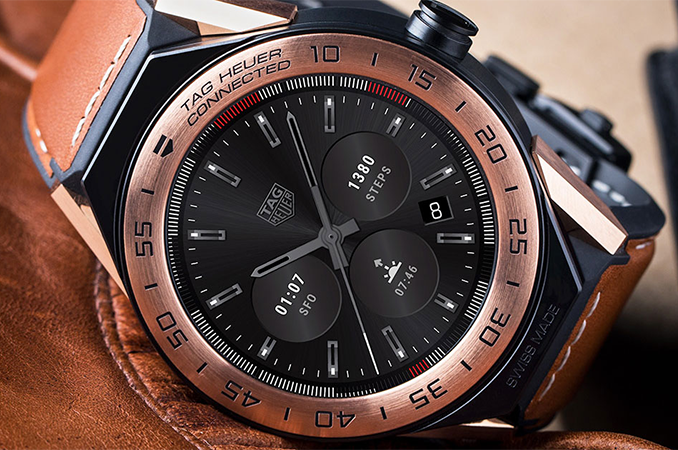
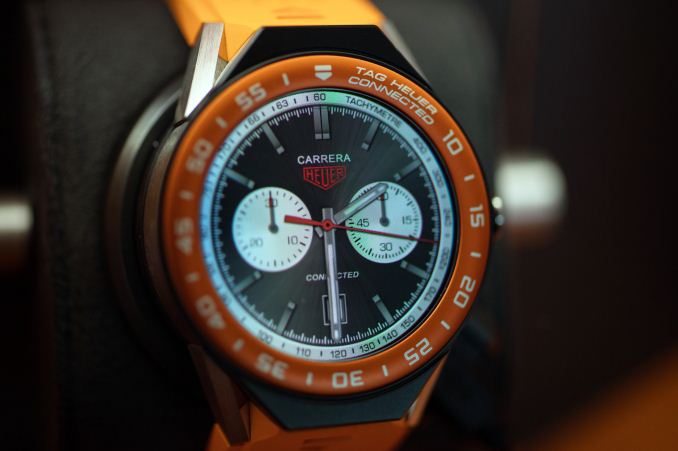

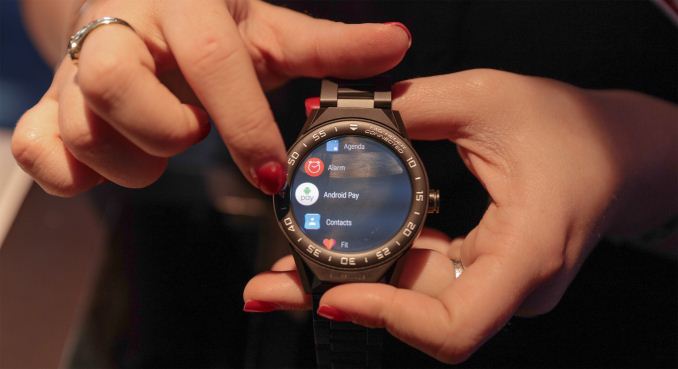

 Quote
Quote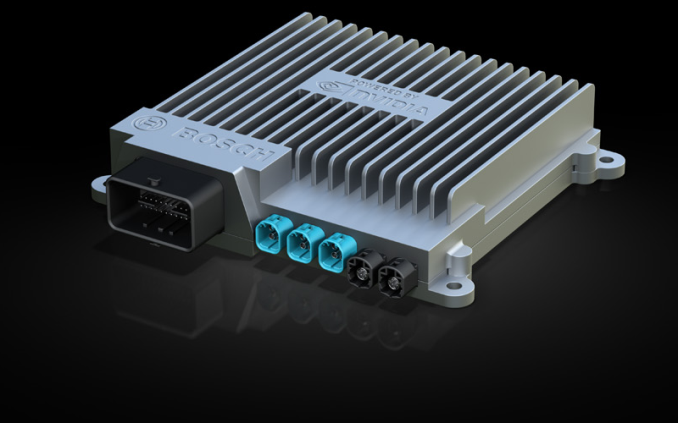

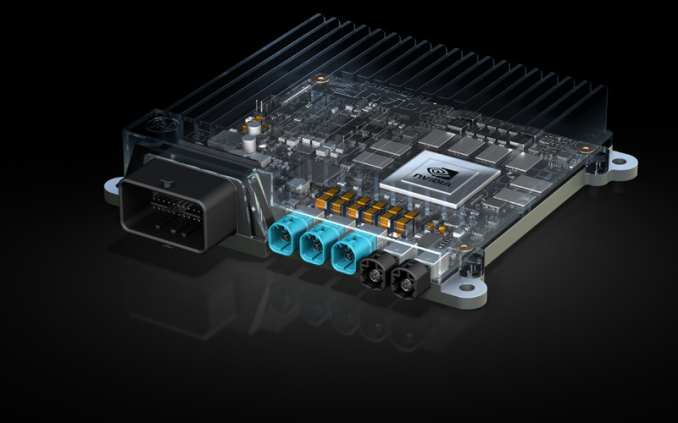
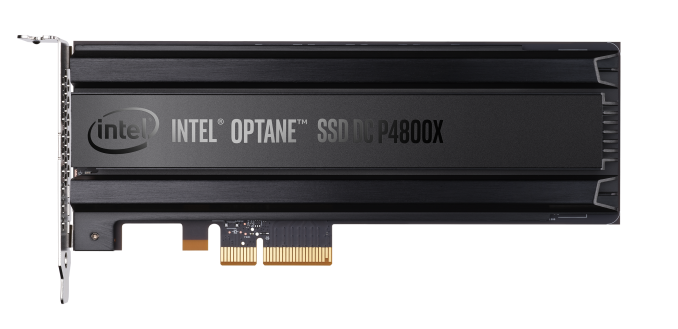
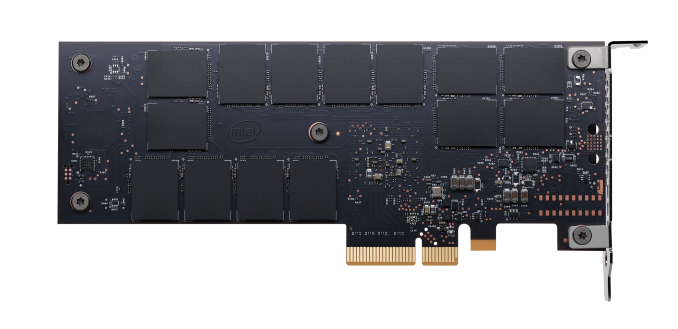

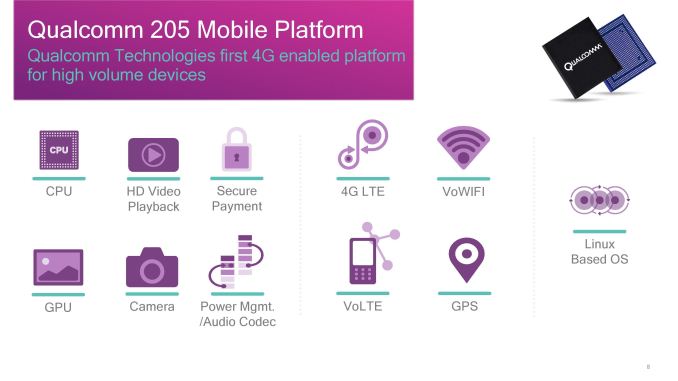
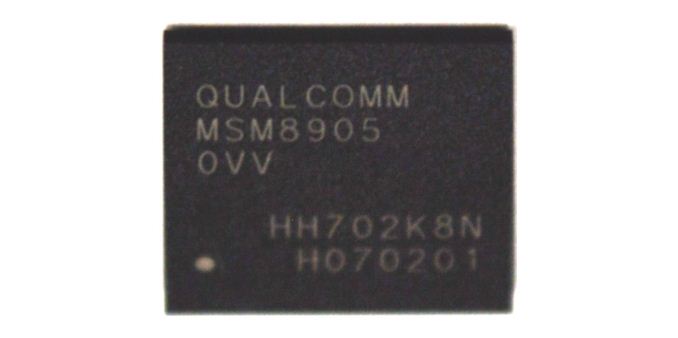
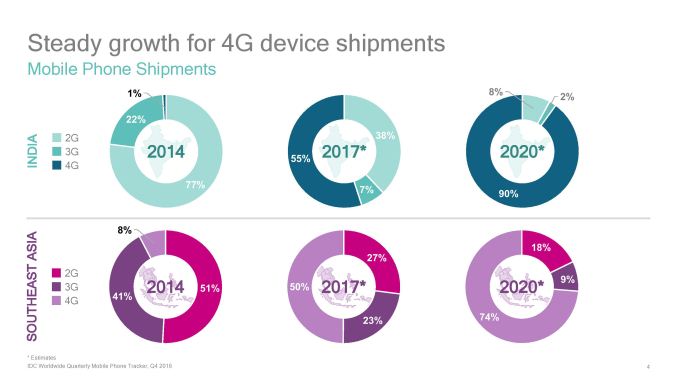

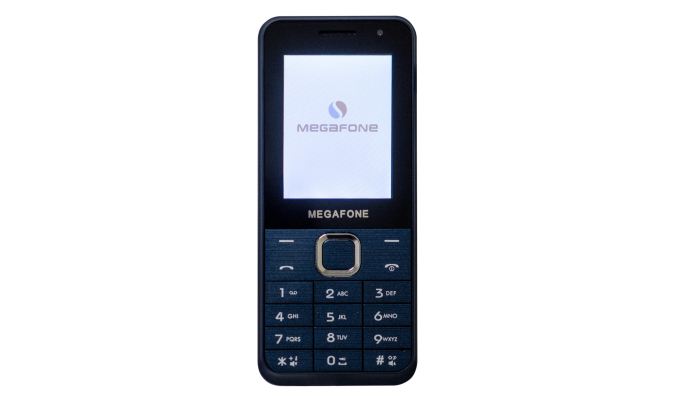






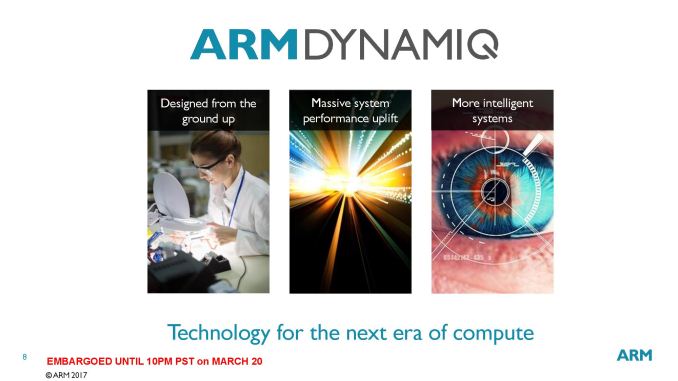
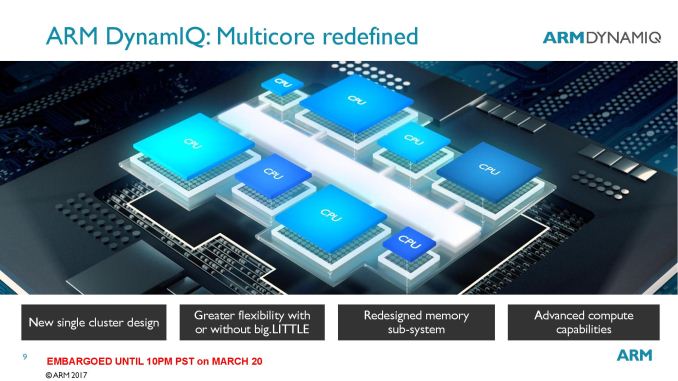
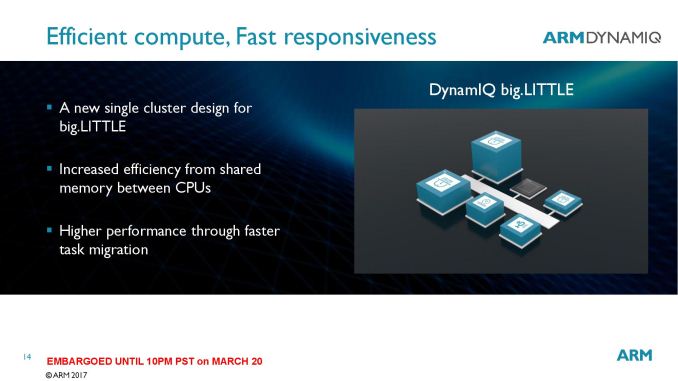
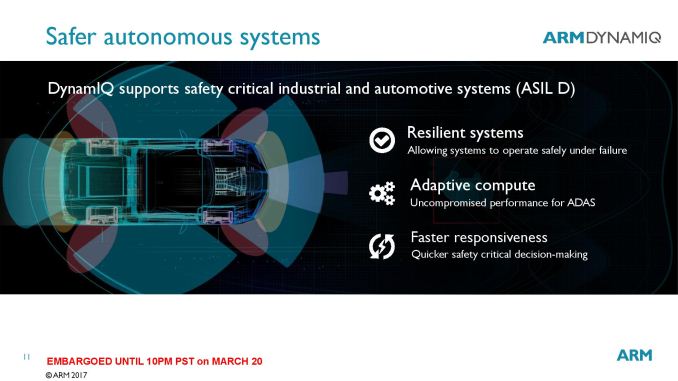

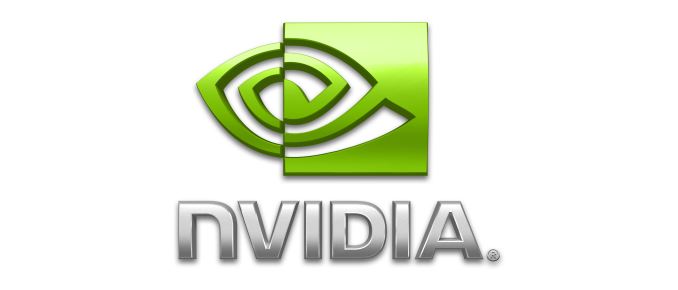
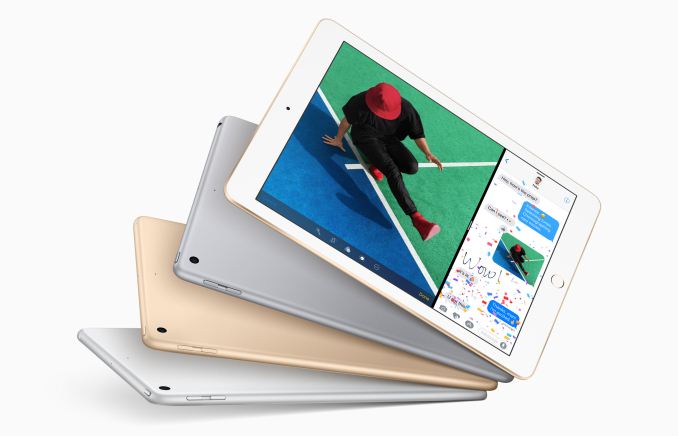















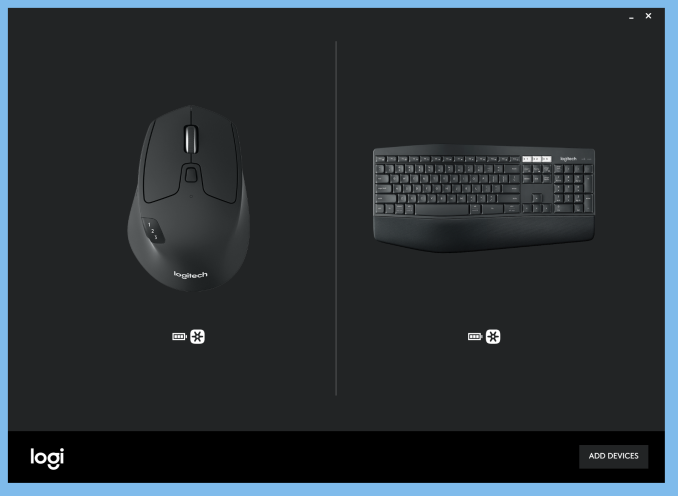






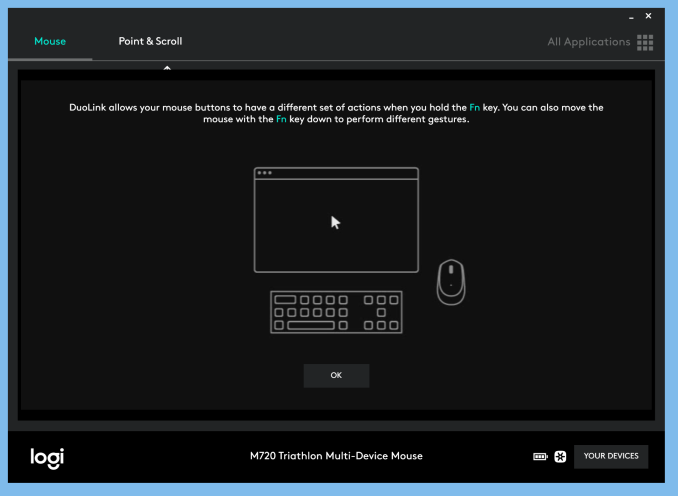





















Bookmarks